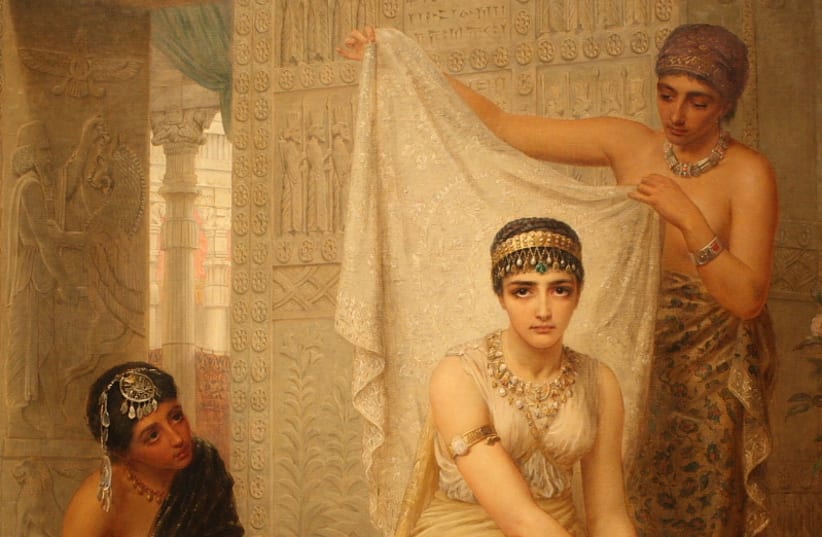Yet the Torah returns us to a consideration of clothing in three separate steps that link together with astonishing alacrity. Last week we read that the mishkan, the tabernacle, was gold on the inside and the outside. This prompts the rabbis to comment (Yoma 72b) that a true scholar’s inside should be like his outside. The obvious next question – what should his outside be like?
This week’s portion, Tetzaveh, is devoted largely to the clothing of the high priest. We begin to understand that one’s externals are not merely cleanliness or deportment, but also clothing. Each bit of the High Priest’s garb is symbolic and taken together they also clearly identify him for who he is – the High Priest. As Ha’amek Davar renders it, God has asked that clothes be made for Aaron to help Aaron in the task of becoming sanctified; the clothes themselves are an aid to sanctity. Shabby is not chic.
So we should be like our clothes? There is some linkage between clothes and character. As Rabbi Isaac Arama observes in his 15th century commentary Akedath Yitzchak, the word for the High Priest’s uniform is mad (plural maddim) and the word for good character traits is middot. And he further notes the same similarity in Latin between habitus, referring to a special garment, (like a nun’s habit) and habit as a quality of character.
The instruction in the Talmud, after all, is that our inside should be like our outside and not the reverse. Why prioritize our outside? External behavior is often more diplomatic, more gracious than our impulses. Happening upon someone we dislike, we are more likely to say, “How are you?” than “Oh, by the way, I don’t like you very much.” In order to appear decently to the world, people smooth over their resentments and frustrations with manners and morals. Conforming our hearts to our habits is one way of growing up.
Yet we have not finished learning from clothes. This year has been strange on the clothing front for one more reason. It has also been the year of wearing masks. Masks, although in our day a public health measure, are traditionally a means of obscuring your true self. They need not be literal – the Kotzker Rebbe once asked his disciples, “Masks, where are your faces?” In other words, I am looking for your true self, not the self you present to the world. Personality, after all, comes from the Latin root meaning “mask.”
The Kotzker is demanding the reverse – making one’s inside reflected on the outside. In Jewish tradition we associate masks with Purim. The Purim story is a beautiful guide to the inside/outside question. Mordechai at first instructs Esther to hide her Judaism. The word Esther means hidden. In other words, he wishes her to wear a mask to protect herself. As time goes on however, he encourages her to step forward and to remove her metaphorical mask. She does and the triumph reminds us that the Purim story is about making one’s outside like one’s inside.
In the months and years to come we will reestablish a more normal way of life. How we present ourselves to the world as we reemerge will affect how we feel. And how we have dealt inside with the trials of 2020 will affect how we look. Even if I still wear a cloth mask can I discard the deeper mask, follow the example of Esther and become who I am?
In the Megillah, as in our world, everything is turned upside down. Now as the world is righting itself again, may we have the wisdom to find consistency of character, inside and out.
The writer is Max Webb Senior Rabbi of Sinai Temple in Los Angeles and the author of David the Divided Heart. On Twitter: @rabbiwolpe.
